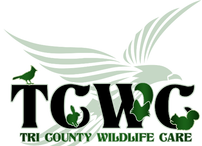May 2015 - the Mule Deer and Fawns
|
Deer give birth in late May through July and fawns weigh only four to six pounds at birth. Deer generally produce twins, but young does may have single fawns and triplets can occur. Those cute little spots will stay for 78 to 83 days. The spots and the reddish brown coat blend with the leaves on the forest floor and provide camouflage from predators. Until the fawns are stable enough on their legs to accompany mom, they will be left alone as the doe goes to find food. The fawns will stay put until the mom returns usually at dawn or dusk. Then she will nurse and clean the fawn to remove any odors that might attract predators. At about three weeks of age, the fawn will go on short outings with its mother.
For the first four months, fawns require mothers milk until their rumen, or first of four stomachs, is fully developed. Then they will learn to consume grasses, blackberries, apples, fireweed, forbs, salmonberry and maple. In winter and early spring, they will learn to feed on Douglas-fir, western red cedar, huckleberry, deer fern and lichens on trees. In small family groups, fawns learn to run, jump, and react to danger and predators. Like most young animals, play time is learning time. Since it is natural for a fawn to be left alone, don’t interfere if you find one unless you notice one of the following signs:
If you find a fawn that has truly been orphaned, call Tri County Wildlife Care. We have a network of caregivers who are trained in rescue and rehabilitation. Call 283-3245 for help with an orphaned fawn. |
Learn More!
|

